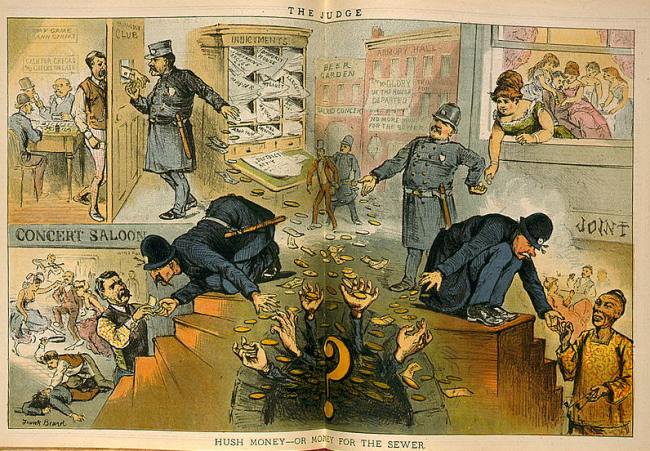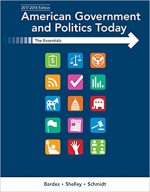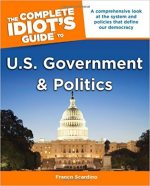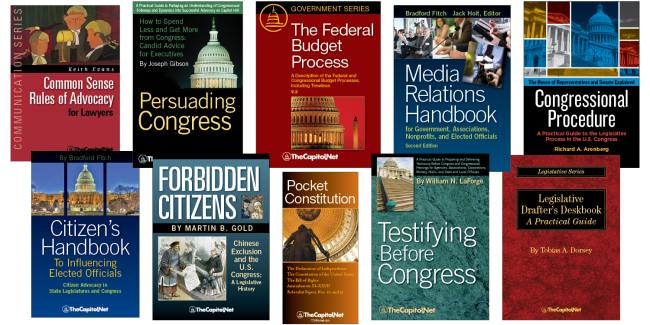CongressPay.com
Also see
|
To learn more about Congress, see our Congress, the Legislative Process, and the Fundamentals of Lawmaking Series, a Nine-Course series on CD. More detailed information about Congress can also be found in Congressional Procedure and the Congressional Deskbook.
For information about numbers in Congress, see Congress by the Numbers.
| Pay |
| House and Senate Salaries | ||||
|---|---|---|---|---|
| House | Senate | |||
| Salary | Honoraria | Salary | Honoraria | |
| 1789 – 1795 | $6 per diem | no limit | $6 per diem | no limit |
| 1795 – 1796 | $6 per diem | no limit | $7 per diem | no limit |
| 1796 – 1815 | $6 per diem | no limit | $6 per diem | no limit |
| 1815 – 1817 | $1,500 | no limit | $1,500 | no limit |
| 1817 – 1855 | $8 per diem | no limit | $8 per diem | no limit |
| 1855 – 1865 | $3,000 | no limit | $3,000 | no limit |
| 1865 – 1871 | $5,000 | no limit | $5,000 | no limit |
| 1871 – 1873 | $7,500 | no limit | $7,500 | no limit |
| 1873 – 1907 | $5,000 | no limit | $5,000 | no limit |
| 1907 – 1925 | $7,500 | no limit | $7,500 | no limit |
| 1925 – 1932 | $10,000 | no limit | $10,000 | no limit |
| 1932 – 1933 | $9,000 | no limit | $9,000 | no limit |
| 1933 – 1935 | $8,500 | no limit | $8,500 | no limit |
| 1935 – 1947 | $10,000 | no limit | $10,000 | no limit |
| 1947 – 1955 | $12,500 | no limit | $12,500 | no limit |
| 1955 – 1965 | $22,500 | no limit | $22,500 | no limit |
| 1965 – 1969 | $30,000 | no limit | $30,000 | no limit |
| 1969 – 1975 | $42,500 | no limit | $42,500 | no limit |
| 1975 – 1977 | $44,600 | no limit | $44,600 | $15,000 |
| 1977 – 1979 | $57,500 | 15% | $57,500 | $15,000 |
| 1979 – 1982 (1) | $60,662.50 | 15% | $60,662.50 | $25,000 |
| Dec. 1982 – 1983 | $69,800 | 30% | (July 1983) $69,800 | 30% |
| 1984 (2) | $72,600 | 30% | $72,600 | 40% |
| 1985 – 1986 | $75,100 | 30% | $75,100 | 40% |
| January 1987 | $77,400 | 30% | $77,400 | 40% |
| March 1987 – 1989 | $89,500 | 30% | $89,500 | 40% |
| 1990 | $96,600 | 30% | $98,400 | 27% |
| January 1991 | $125,100 | $0 | $101,900 | 27% |
| July 1991 | $125,100 | $0 | $125,100 | $0 |
| January 1992 | $129,500 | $0 | $129,500 | $0 |
| 1993 – 1997 | $133,600 | $0 | $133,600 | $0 |
| January 1998 | $136,700 | $0 | $136,700 | $0 |
| January 2000 | $141,300 | $0 | $141,300 | $0 |
| January 2001 | $145,100 | $0 | $145,100 | $0 |
| January 2002 | $150,000 | $0 | $150,000 | $0 |
| January 2003 | $154,700 | $0 | $154,700 | $0 |
| January 2004 | $158,100 | $0 | $158,100 | $0 |
| January 2005 | $162,100 | $0 | $162,100 | $0 |
| January 2006 | $165,200 | $0 | $165,200 | $0 |
| January 2007 (3) | $165,200 | $0 | $165,200 | $0 |
| January 2008 (4) | $169,300 | $0 | $169,300 | $0 |
| January 2009 (5) | $174,000 | $0 | $174,000 | $0 |
| January 2010 (6) | $174,000 | $0 | $174,000 | $0 |
| January 2011 (7) | $174,000 | $0 | $174,000 | $0 |
| January 2012 (8) |
$174,000 | $0 | $174,000 | $0 |
| April 2013 (9) |
$174,000 | $0 | $174,000 | $0 |
| January 2014 (10) |
$174,000 | $0 | $174,000 | $0 |
| January 2015 (11) |
$174,000 | $0 | $174,000 | $0 |
| January 2016 (12) |
$174,000 | $0 | $174,000 | $0 |
| January 2017 (13) |
$174,000 | $0 | $174,000 | $0 |
| January 2018 (14) |
$174,000 | $0 | $174,000 | $0 |
| January 2019 (15) |
$174,000 | $0 | $174,000 | $0 |
| January 2020 (16) |
$174,000 | $0 | $174,000 | $0 |
| January 2021 (17) |
$174,000 | $0 | $174,000 | $0 |
| January 2022 (18) |
$174,000 | $0 | $174,000 | $0 |
| January 2023 (19) |
$174,000 | $0 | $174,000 | $0 |
- The Constitution of the United States: Amendment 27 (27th Amendment – Limiting Congressional Pay Increases)
- Would Proposed Law Suspending Payment of Congressmen’s Salary Until They Produce a Budget Violate the 27th Amendment?
- The Twenty-Seventh Amendment
(1) Percentage increases in congressional salaries are generally rounded to the nearest $100. The 1979 increase was not rounded because of specific language in the enacting legislation.
(2) In 1984, actual increase amounted to less than $270, because members started paying Social Security in 1984.
(3) Executive Order December 21, 2006 (11-page PDF![]() ) “The rate of pay for the Vice President is effective on the first day of the first applicable period beginning on or after January 1, 2007, and the rates of pay for Members of Congress are effective February 16, 2007”. Also see OPM Memo, CPM 2006-19, December 21, 2006. However, Section 115 of H.J.Res. 20, the Revised Continuing Appropriations Resolution for FY2007, as signed into law by the President on February 15, 2007, denied a pay adjustment in 2007 to the Speaker of the House, the President Pro Tempore of the Senate, the Majority and Minority Leaders of the House and Senate, and the Senators and Representatives.
) “The rate of pay for the Vice President is effective on the first day of the first applicable period beginning on or after January 1, 2007, and the rates of pay for Members of Congress are effective February 16, 2007”. Also see OPM Memo, CPM 2006-19, December 21, 2006. However, Section 115 of H.J.Res. 20, the Revised Continuing Appropriations Resolution for FY2007, as signed into law by the President on February 15, 2007, denied a pay adjustment in 2007 to the Speaker of the House, the President Pro Tempore of the Senate, the Majority and Minority Leaders of the House and Senate, and the Senators and Representatives.
(4) Executive Order 13454: “Adjustments of Certain Rates of Pay,” Federal Register, Vol. 73 No. 5, page 1486, January 8, 2008 (14-page PDF![]() ).
).
(5) Executive Order 13483: “Adjustments of Certain Rates of Pay,” Federal Register, Vol. 73 No. 247 page 78587, December 18, 2008 (12-page PDF![]() ). Also see “Pay Freeze,” Presidential Memorandum of January 21, 2009, 74 FR 4679 (1-page PDF
). Also see “Pay Freeze,” Presidential Memorandum of January 21, 2009, 74 FR 4679 (1-page PDF![]() ).
).
(6) Executive Order 13525: “Adjustments of Certain Rates of Pay,” Federal Register, Vol. 74 No. 249, page 69231, December 23, 2009 (12-page PDF![]() ).
).
(7) Executive Order 13561: “Adjustments of Certain Rates of Pay,” Federal Register, Vol. 75 No. 249, page 81817, December 29, 2010 (14-page PDF![]() )
)
(8) Executive Order 13594: “Adjustments of Certain Rates of Pay,” signed December 19, 2011, Federal Register, Vol. 76 No. 247, page 80191, December 23, 2011 (13-page PDF![]() )
)
(9) Executive Order 13635: “Adjustments of Certain Rates of Pay,” signed December 27, 2012, Federal Register, Vol. 78 No. 2, page 649, January 3, 2013 (12-page PDF![]() ) The Executive Order signed Dec. 27, 2012, provided that the adjustments of rate of pay for the Judiciary, Members of Congress, Vice President, and Cabinet Officers are effective on the first day of the first applicable pay period beginning after March 27, 2013. However, The American Taxpayer Relief Act of 2012 (112 H.R. 8) (the fiscal cliff deal) included language holding congressional salaries at current rates through 2013, meaning part of the President’s Executive Order–lawmakers’ pay–will not go into effect.
) The Executive Order signed Dec. 27, 2012, provided that the adjustments of rate of pay for the Judiciary, Members of Congress, Vice President, and Cabinet Officers are effective on the first day of the first applicable pay period beginning after March 27, 2013. However, The American Taxpayer Relief Act of 2012 (112 H.R. 8) (the fiscal cliff deal) included language holding congressional salaries at current rates through 2013, meaning part of the President’s Executive Order–lawmakers’ pay–will not go into effect.
(10) Executive Order 13655: “Adjustments of Certain Rates of Pay,” signed December 23, 2013, Federal Register, Vol. 78 No. 251, page 80451, December 31, 2013 (12-page PDF![]() )
)
(11) Executive Order 13686: “Adjustments of Certain Rates of Pay,” signed December 19, 2014, Federal Register, Vol. 79 No. 247, page 77361, December 19, 2014 (12-page PDF![]() )
)
(12) Executive Order 13715: “Adjustments of Certain Rates of Pay,” signed December 18, 2015, Federal Register, Vol. 80 No. 246, page 80193, December 23, 2015 (12-page PDF![]() )
)
(13) Executive Order 13756: “Adjustments of Certain Rates of Pay,” signed December 27, 2016, Federal Register, Vol. 81, page 97099, December 30, 2016 (12-page PDF![]() )
)
(14) Executive Order 13819: “Adjustments of Certain Rates of Pay,” signed December 22, 2017, Federal Register, Vol. 82, page 61431, December 27, 2017 (12-page PDF![]() )
)
(15) Executive Order 13819: “Adjustments of Certain Rates of Pay,” signed December 28, 2018, Federal Register, Vol. 84, page 65, December 28, 2018 (16-page PDF![]() )
)
(16) Executive Order 13901: “Adjustments of Certain Rates of Pay,” signed December 26, 2019, Federal Register, Vol. 84, page 72213, December 30, 2019 (13-page PDF![]() )
)
(17) Executive Order 13970: “Adjustments of Certain Rates of Pay,” signed December 30, 2020, Federal Register, Vol. 86, page 421, January 6, 2021 (13-page PDF![]() )
)
(18) Executive Order 14061: “Adjustments of Certain Rates of Pay,” signed December 22, 2021, Federal Register, Vol. 86, page 73601, December 28, 2021 (13-page PDF![]() )
)
(19) Executive Order 14090: “Adjustments of Certain Rates of Pay,” signed December 23, 2022, Federal Register, Vol. 87, page 79985, December 28, 2022 (13-page PDF![]() )
)
Also see:
- OPM: Pay & Leave, Salaries & Wages
- “Legislative, Executive, and Judicial Officials: Process for Adjusting Pay and Current Salaries,” CRS Report RL33245, February 9, 2011 (20-page PDF
 )
) - “Salaries of Members of Congress: Recent Actions and Historical Tables,” CRS Report 97-1011, August 29, 2023 (34-page PDF
 )
) - “Salaries of Members of Congress: Congressional Votes, 1990-2023,” CRS Report 97-615, August 29, 2023 (41-page PDF
 )
) - “Congressional Salaries and Allowances: In Brief,” CRS Report RL30064, September 19, 2023 (18-page PDF
 )
) - Congressional Pay: Lower pay means more corruption?
The top six leaders of Congress receive additional pay. The figures below reflect an upward adjustment on January 1 of the indicated year for a cost of living increase. However, see note (3) above for 2007, and note (9) above for 2013.
Salaries for Federal Officials |
||||
|
Calendar Year (Note) |
Executive Order |
|||
| 2022 (18) |
Executive Order 14061 |
|||
| 2021 (17) |
Executive Order 13970 |
|||
| 2020 (16) |
Executive Order 13901 |
|||
| 2019 (15) |
Executive Order 13819 |
|||
| 2018 (14) |
Executive Order 13819 |
|||
| 2017 (13) |
Executive Order 13756 |
|||
| 2016 (12) |
Executive Order 13715 |
|||
| 2015 (11) |
Executive Order 13686 |
|||
| 2014 (10) |
Executive Order 13655 |
|||
| 2013 (9) |
Executive Order 13635 |
|||
2012 (8) |
Executive Order 13594 |
|||
2011 (7) |
Executive Order 13561 |
|||
2010 (6) |
Executive Order 13525 |
|||
| 2009 (5) |
Executive Order 13483 |
|||
| 2008 (4) |
Executive Order 13454 |
|||
Legislative Branch |
||||
| Calendar Year | Speaker of the House |
Majority and minority leaders of both chambers and Senate president pro temporare |
Senators and Representatives |
|
| 2009 – 2023 | $223,500 |
$193,400 |
$174,000 |
|
| 2008 | $217,400 |
$188,100 |
$169,300 |
|
| 2006-2007 | $212,100 |
$183,500 |
$165,200 |
|
| 2005 | $208,100 |
$180,100 |
$162,100 |
|
| 2004 | $203,000 |
$175,700 |
$158,100 |
|
| 2003 | $198,600 |
$171,900 |
$154,700 |
|
| 2002 | $192,600 |
$166,700 |
$150,000 |
|
Judicial Branch |
||||
| Calendar Year | Chief Justice |
Associate Justices |
US Courts of Appeals judges |
Federal District judges |
| 2023 | $298,500 |
$285,400 | $246,600 | $232,600 |
| 2022 | $286,700 |
$274,200 | $236,900 | $223,400 |
| 2021 | $280,500 |
$268,300 | $231,800 | $218,600 |
| 2020 | $277,700 |
$265,600 | $229,500 | $216,400 |
| 2018 – 2019 | $267,000 |
$255,300 | $220,600 | $208,000 |
| 2017 | $263,300 |
$251,800 | $217,600 | $205,100 |
| 2016 | $260,700 |
$249,300 | $215,400 | $203,100 |
| 2015 | $258,100 |
$246,800 | $213,300 | $201,100 |
| 2014 | $255,500 |
$244,400 | $211,200 | $199,100 |
| 2010 – 2013 | $223,500 |
$213,900 | $184,500 | $174,000 |
| 2008 – 2009 | $217,400 |
$208,100 | $179,500 | $169,300 |
| 2006 – 2007 | $212,100 |
$203,000 | $175,100 | $165,200 |
| 2005 | $208,100 |
$199,200 | $171,800 | $162,100 |
| 2004 | $203,000 |
$194,300 | $167,600 | $158,100 |
| 2003 | $198,600 |
$190,100 | $164,000 | $154,700 |
| 2002 | $192,600 |
$184,400 | $159,100 | $150,000 |
Executive Branch |
||||
| Calendar Year | President |
Vice President (3) |
Cabinet Officers |
|
| 2023 | $400,000 |
$272,100 |
$235,600 |
|
| 2022 | $400,000 |
$261,400 |
$226,300 |
|
| 2021 | $400,000 |
$255,800 |
$221,400 |
|
| 2020 | $400,000 |
$253,300 |
$219,200 |
|
| 2018 – 2019 | $400,000 |
$243,500 | $210,700 | |
| 2017 | $400,000 |
$240,100 | $207,800 | |
| 2016 | $400,000 |
$237,700 | $205,700 | |
| 2015 | $400,000 |
$235,300 | $203,700 | |
| 2014 | $400,000 |
$233,000 | $201,700 | |
| 2013 | $400,000 |
$231,900 | $200,700 | |
| 2010-2012 | $400,000 |
$230,700 | $199,700 | |
| 2009 | $400,000 |
$227,300 | $193,400 | |
| 2008 | $400,000 |
$221,100 | $188,100 | |
| 2007 | $400,000 |
$215,700 | $186,600 | |
| 2006 | $400,000 |
$212,100 | $183,500 | |
| 2005 | $400,000 |
$208,100 | $180,100 | |
| 2004 | $400,000 |
$203,000 | $175,700 | |
| 2003 | $400,000 |
$198,600 | $171,900 | |
| 2002 | $400,000 |
$192,600 | $166,700 | |
Sources:
-
- Congressional Deskbook Chapter 4, “Allowances and Staff”, §§ 4.10-4.20
- Federal Employees: Pension COLAs and Pay Adjustments Since 1969, CRS Report 94-971, December 7, 2010 (15-page PDF
 )
) - House Sergeant at Arms; Senate Disbursing Office; Congressional Budget Office; Office of Personnel Management; Administrative Office of the U.S. Courts.
- Executive Order 13454: “Adjustments of Certain Rates of Pay,” Federal Register, Vol. 73 No. 5, page 1486, January 8, 2008 (12-page PDF
 )
) - Executive Order 13525: “Adjustments of Certain Rates of Pay,” Federal Register, Vol. 74 No. 249, page 69231, December 23, 2009 (12-page PDF
 )
) - Executive Order 13561: “Adjustments of Certain Rates of Pay,” Federal Register, Vol. 75 No. 249, page 81817, December 22, 2010 (12-page PDF
 )
) - Executive Order 13594: “Adjustments of Certain Rates of Pay,” signed December 19, 2011, Federal Register, Vol. 76 No. 247, page 80191, December 23, 2011 (13-page PDF
 )
) - Executive Order 13635: “Adjustments of Certain Rates of Pay,” signed December 27, 2012, Federal Register, Vol. 78 No. 2, page 649, January 3, 2013 (12-page PDF
 ) The Executive Order signed Dec. 27, 2012, provided that the adjustments of rate of pay for the Judiciary, Members of Congress, Vice President, and Cabinet Officers are effective on the first day of the first applicable pay period beginning after March 27, 2013. However, The American Taxpayer Relief Act of 2012 (112 H.R. 8) (the fiscal cliff deal) included language holding congressional salaries at current rates through 2013, meaning part of the President’s Executive Order–lawmakers’ pay–did not go into effect.
) The Executive Order signed Dec. 27, 2012, provided that the adjustments of rate of pay for the Judiciary, Members of Congress, Vice President, and Cabinet Officers are effective on the first day of the first applicable pay period beginning after March 27, 2013. However, The American Taxpayer Relief Act of 2012 (112 H.R. 8) (the fiscal cliff deal) included language holding congressional salaries at current rates through 2013, meaning part of the President’s Executive Order–lawmakers’ pay–did not go into effect. - (10) Executive Order 13655: “Adjustments of Certain Rates of Pay,” signed December 23, 2013, Federal Register, Vol. 78 No. 251, page 80451, December 31, 2013 (12-page PDF
 )
)
- (11) Executive Order 13686: “Adjustments of Certain Rates of Pay,” signed December 19, 2014, Federal Register, Vol. 79 No. 247, page 77361, December 19, 2014 (12-page PDF
 )
)
- (12) Executive Order 13715: “Adjustments of Certain Rates of Pay,” signed December 18, 2015, Federal Register, Vol. 80 No. 246, page 80193, December 23, 2015 (12-page PDF
 )
)
- (13) Executive Order 13756: “Adjustments of Certain Rates of Pay,” signed December 27, 2016, Federal Register, Vol. 81, page 97099, December 30, 2016 (12-page PDF
 )
)
- (14) Executive Order 13819: “Adjustments of Certain Rates of Pay,” signed December 22, 2017, Federal Register, Vol. 82, page 61431, December 27, 2017 (12-page PDF
 )
)
- (15) Executive Order 13856: “Adjustments of Certain Rates of Pay,” signed December 28, 2018, Federal Register, Vol. 84, page 65, December 28, 2018 (16-page PDF
 )
)
- (16) Executive Order 13901: “Adjustments of Certain Rates of Pay,” signed December 26, 2019, Federal Register, Vol. 84, page 72213, December 30, 2019 (13-page PDF
 )
)
- (17) Executive Order 13970: “Adjustments of Certain Rates of Pay,” signed December 30, 2020, Federal Register, Vol. 86, page 421, January 6, 2021 (13-page PDF
 )
) - (18) Executive Order 14061: “Adjustments of Certain Rates of Pay,” signed December 22, 2021, Federal Register, Vol. 86, page 73601, December 28, 2021 (13-page PDF
 )
)
- (19) Executive Order 14090: “Adjustments of Certain Rates of Pay,” signed December 23, 2022, Federal Register, Vol. 87, page 79985, December 28, 2022 (13-page PDF
 )
)
Also see
- “Salaries of Members of Congress: Congressional Votes, 1990-2022,” CRS Report 97-615, August 8, 2022 (40-page PDF
 )
) - “How Much Is Enough? Setting Pay for Presidential Appointees,” by Gary Burtless, The Brookings Institution, March 22, 2002.
- “How to Pay the Piper: It’s Time to Call Different Tunes for Congressional and Judicial Salaries,” by Russell R. Wheeler and Michael S. Greve, Issues in Governance Studies, The Brookings Institution, April 2007
| Perquisites |
See generally:
- Members of Congress Who Die in Office: Historic and Current Practices, CRS Report RL34347, April 25, 2012 (32-page PDF
 )
) - Members of the House of Representatives Lying in State in the U.S. Capitol, CRS Insight IN11472, July 28, 2020 (6-page PDF
 )
) - “Congressional Salaries and Allowances: In Brief,” CRS Report RL30064, September 19, 2023 (18-page PDF
 )
)
For Members of the House geernally, see “Members’ Congressional Handbook” from the Committee on House Administration
![]()
Retirement Benefits for members are available through the Civil Service Retirement System (CSRS) and the newer Federal Employees’ Retirement System (FERS). FERS was enacted in 1986 to provide retirement benefits for all civilian employees and postal workers hired after Dec. 31, 1983. FERS consists of three major parts: Social Security, a required basic plan to supplement Social Security and an optional tax-deferred savings plan similar to private 401(k) plans. More senior workers who are covered by CSRS were allowed to join the new system between July 1, 1987, and December 31, 1987.
- Under CSRS, a member becomes eligible for benefits upon retirement from Congress if he or she is 62 years old with five years of congressional service; 60 years old with 10 years of service; or 50 years old with 20 years of congressional service.
- Under FERS, a member becomes eligible for benefits upon retirement from Congress if he or she is 62 years old with five years of congressional service; 50 years old with 20 years of service; or any age with 25 years of congressional service.
- Also see
- Retirement Benefits for Members of Congress, CRS Report RL30631, July 25, 2023 (22-page PDF
 )
) - Federal Employees: Pension COLAs and Pay Adjustments Since 1969, CRS Report 94-971, December 7, 2010 (15-page PDF
 )
) - “Will your congressman retire richer than you?” CNNMoney, July 30, 2013
- Retirement Benefits for Members of Congress, CRS Report RL30631, July 25, 2023 (22-page PDF
What Benefits Do Members Of Congress Get After Leaving Office?
![]()
Personal Staff Allowances enable members to hire aides for clerical, administrative, legislative and media support. (See Congressional Deskbook, § 4.60, “Personal Staff”).
The Members’ Representational Allowance (MRA) is the budget authorized by the Committee on House Administration for each Member of Congress in support of the conduct of official and representational duties to the district from which elected. For Legislative Year 2011, the MRA ranged from $1.3 – 1.9 million. The Statement of Disbursements (SOD) is a quarterly public report of all receipts and expenditures for U.S. House of Representatives Members, Committees, Leadership, Officers and Offices. The House has been required by law to publish the SOD since 1964. Statement of Disbursements – House
- Representatives’ staff allowances can be used to hire up to 18 permanent and four non-permanent aides divided between the members’ Washington and district offices. Up to $75,000 of a representative’s staff funds can be transferred to his or her official expense account for use in other categories, such as
computer and related services. The maximum salary allowed House personal staffers in 2005 was $156,848 (2001: $140,451). - Senators’ personal staff allowances vary with the size of the members’ states. Senators may hire as many aides as they wish within their allowance; typically this ranges between 26 and 60, depending on the size of the state and the salary levels offered to the staffers.
- The maximum salary allowed to Senate personal staffers in 2003 was $150,159 (1999: $132,159); for Senate legislative staffers the maximum salary in 2005 was $153,599.
- In addition to their personal staffs, senators and representatives are assisted on legislative matters by staffs of the committees and subcommittees on which they serve.
- Congressional salary information is available from LegiStorm.
- “Legislative Branch Staffing, 1954-2007,” CRS Report R40056, October 15, 2008 (13-page PDF
 )
) - “Vital Stats: Congress has a staffing problem, too,” by Curtlyn Kramer, The Brookings Institution, May 24, 2017
![]()
Expense Allowances for members, kept separate from personal staff allowances, cover domestic travel, stationery, newsletters, overseas postage, telephone and telegraph service, and other expenses in Washington and in the members’ state or congressional districts.
See also
- Legislative Branch Appropriations, 2007, S. Rept. 109-267, June 22, 2006 (67-page PDF
 )
) - Legislative Branch Appropriations, 2010, S. Rept. 111-29, June 18, 2009 (65-page PDF
 )
) - Legislative Branch Appropriations, 2012, S. Rept. 112-80, September 15, 2011 (62-page PDF
 )
) - Legislative Branch: FY2012 Appropriations, CRS Report R41870, October 21, 2011 (30-page PDF
 )
) - Legislative Branch: FY2013 Appropriations, CRS Report R42500, April 24, 2012 (28-page PDF
 )
) - Legislative Branch: FY2014 Appropriations, CRS Report R43151, August 19, 2013 (39-page PDF
 )
) - Legislative Branch: FY2017 Appropriations, CRS Report R44515, June 1, 2016 (38-page PDF
 )
)
- Legislative Branch: FY2018 Appropriations, CRS Report R44899, July 20, 2017 (36-page PDF
 )
)
- Legislative Branch: FY2019 Appropriations, CRS Report R45214, November 13, 2018 (40-page PDF
 )
)
- Legislative Branch: FY2020 Appropriations, CRS Report R45755, February 12, 2020 (40-page PDF
 )
)
- Legislative Branch: FY2021 Appropriations, CRS Report R46469, February 26, 2021 (40-page PDF
 )
)
- “Legislative Branch: FY2022 Appropriations,” CRS Report R46936, May 18, 2022 (44-page PDF
 )
) - “Legislative Branch: FY2023 Appropriations,” CRS Report R47296, October 27, 2022 (43-page PDF
 )
) - “Legislative Branch: FY2024 Appropriations,” CRS Report R47624, October 17, 2023 (44-page PDF
 )
) - Senators’ Official Personnel and Office Expense Account (SOPOEA): History and Usage, CRS Report R44399 (19-page PDF
 )
)
![]()
The Franking Privilege, a valuable perquisite, allows a member to mail official letters and packages under the members’ signature without charges for postage. (See Congressional Deskbook, § 4.50, “Franking Privilege”)
See Frank / Franking Privilege (Congressional Glossary)
- Regulations limit the franking privilege to correspondence “in which the member deals with the addressee as a citizen of the United States or constituent.”
- Among the major categories of mail permitted under the franking privilege are mail to any individual or agency and to officials at any level of government regarding programs and proposed legislation; newsletters and news releases; questionnaires, nonpartisan voter registration or election information and assistance; mailings that consist of federal laws and regulations; government publications and publications of general interest.
- The use of the frank is prohibited for mail that is purely personal, mail that is “laudatory and complimentary” to the member, or mail related to a political campaign.
- In 1989, the franking privilege came under strong attack – and even appeared endangered at one point. The attack focused on incumbents’ use of mass mailings, particularly newsletters about a member’s activities and notices of town meetings, to raise name identification in an election year. Runaway costs of such mailings also were a point of concern.
- In legislation considered in 1989, both the House and Senate voted at different points to eliminate the franking privilege for mass mailings. However, in the end, members only cut in half, from six to three, the number of such mailings a member is allowed to send each year. (Mailed announcements for town meetings were not included.) The final provisions of the legislation limited the amount of newsletters and set up separate funding accounts for the House and Senate to make it clear which chamber is exceeding its limits.
- The Senate in 1989 changed its internal rules concerning franked mail to allocate funds among senators and to prevent use of campaign funds to pay for franked mass mailings – a practice House rules already barred.
- The fiscal year 1991 Legislative Branch Appropriations Act also imposed new restrictions on franking privileges. The act gave each House member a mail budget and required public disclosure of how much each member spends on mailings. The act also limited a senator’s ability to transfer funds into their mail accounts from other accounts.
- Frank / Franking Privilege (Congressional Glossary)
- Franking Privilege: Mass Mailings and Mass Communications in the House, 1997-2015, CRS Report RL34458 (17-page PDF
 )
) - Franking Privilege: Historical Development and Options for Change, CRS Report RL34274 (29-page PDF
 )
) - Congressional Franking Privilege: Background and Recent Legislation, CRS Report RS22771 (12-page PDF
 )
)
![]()
Foreign Travel by members for the conduct of government business is financed through special allowances. These funds can come from various sources.
House
House members must file reports with the Clerk. See “FOREIGN TRAVEL REPORTS”
Senate
The Senate Select Committe on Ethics provides guidance on travel:
The guidance herein is intended as a summary of relevant Senate Rules, federal law, and related standards of conduct. The application of ethics laws, rules and standards of conduct is fact-specific, and the information herein is not meant as a substitute for obtaining the Committee’s advice and guidance on a particular matter. Providing advisory guidance to Members, officers, and employees is an important part of the Committee’s work, and the Committee strongly encourages Members, officers, and employees to contact the Committee and seek advice whenever possible.
See CODEL / Congressional Delegation / Junket (CongressionalGlossary.com)
- Money is appropriated by Congress through the Mutual Security Act to pay travel and other expenses of congressional committees for routine and special investigations.
- Members traveling abroad are allowed to use American-owned counterpart funds. These are foreign currencies held by U.S. embassies and credited to the United States as part of various foreign assistance programs; they can be spent only in the country of origin.
- American Ambassadors overseas are allocated sums for official entertaining. These funds may be used for the same purpose by members of Congress when traveling overseas.
- Members may use the funds of various government agencies when they speak on foreign policy issues at overseas posts.
- Members may travel on military aircraft, including cargo planes, at no charge.
- The 1989 Ethics in Government Act set restrictions on foreign travel paid by lobbyists and other special interests.
- For both the House and Senate, special-interest paid foreign travel is limited to seven consecutive days, excluding the days spent traveling.
- Domestic travel funded by special-interest groups is limited to four consecutive days on the House side (including travel time), and three consecutive days on the Senate side (excluding travel time).
- One relative per trip also may accept special interest-paid travel expenses, and the ethics committee may grant an extension in exceptional circumstances.
See also
- Congressional International Travel: Data Since 1993 and Options for Congress, CRS Memorandum to Congress, February 26, 2010 (24-page PDF
 )
) - International Travel by Congress: Legislation, Background, and Potential Policy Options, CRS Report R41388, March 29, 2012 (34-page PDF
 )
)
![]()
Outside Employment Income is generally limited to 15% of member pay. There are, however, certain prohibited categories: Members may not receive compensation for employment in real estate, insurance sales, the practice of law, the practice of medicine, or service as an officer or board member.
![]()
Domestic Travel (to and from District/State)
House: Included in office expenses is a minimum amount of $9,700 (2003), with additional funding based on a formula that uses the distance from Washington, DC to the farthest point in the Congressional district from Washington.
Senate: The official expense allowance is based overall on population and distance, and includes travel.
For more information on Congressional pay and perks, see also
- “Congressional Careers: Service Tenure and Patterns of Member Service, 1789-2023,” CRS Report R41545, January 17, 2023 (20-page PDF
 )
) - Compensation Policy Memoranda, from OPM
- LegiStorm – Congressional salary information
- Executive Order December 21, 2006 (11-page PDF
 )
) - Executive Order 13249, Adjustments of Certain Rates of Pay (effective January 1, 2002), December 29, 2001
- “Former Presidents: Pensions, Office Allowances, and Other Federal Benefits,” CRS Report RL34631, March 16, 2016 (31-page PDF
 )
) - Retirement Benefits for Members of Congress, CRS Report RL30631, July 25, 2023 (22-page PDF
 )
) - “Congressional Salaries and Allowances: In Brief,” CRS Report RL30064, September 19, 2023 (18-page PDF
 )
) - Salaries and Retirement Benefits of U.S. Presidents and other Federal Government Employees, a Frequently Asked Reference Question (FARQ) from the Internet Public Library
- “Salaries of Federal Officials: A Fact Sheet,” CRS Report 98-53, January 11, 2005 (3-page PDF
 )
) - “Salaries of Members of Congress: Recent Actions and Historical Tables,” CRS Report 97-1011, August 29, 2023 (34-page PDF
 )
) - “Summary of President and Congress Pay Data,” by Robert Sahr, Oregon State University
- Senate Salaries since 1789, from the U.S. Senate
American Government and Politics Today
The Complete Idiot’s Guide to U.S. Government and Politics
Almanac of American Politics
Politics in America 2016 Presidential Election Edition
Also see
- Congress by the Numbers – including current party numbers in Congress
- Congress Seating Charts
- Congressional Fellowship and Internship
- Congressional Schedule
- Congressional leadership and committees
- How a Bill Becomes Law
- How to Contact Congress
- Pocket Constitution
- Senate Classes: Terms of Service
- Terms of Congress
- Visiting Washington, DC
- What’s the deal with….
Courses
- Congressional Operations Briefing – Capitol Hill Workshop
- Drafting Federal Legislation and Amendments
- Writing for Government and Business: Critical Thinking and Writing
- Custom Training
- Drafting Effective Federal Legislation and Amendments in a Nutshell, Audio Course on CD
- Congress, the Legislative Process, and the Fundamentals of Lawmaking Series, a Nine-Course series on CD
For more than 40 years, TheCapitol.Net and its predecessor, Congressional Quarterly Executive Conferences, have been teaching professionals from government, military, business, and NGOs about the dynamics and operations of the legislative and executive branches and how to work with them.
Our custom on-site and online training, publications, and audio courses include congressional operations, legislative and budget process, communication and advocacy, media and public relations, testifying before Congress, research skills, legislative drafting, critical thinking and writing, and more.
TheCapitol.Net is on the GSA Schedule, MAS, for custom on-site and online training. GSA Contract GS02F0192X
TheCapitol.Net is now owned by the Sunwater Institute.
Teaching how Washington and Congress work ™






